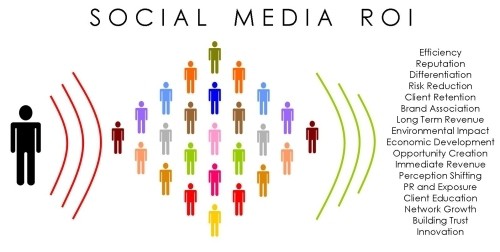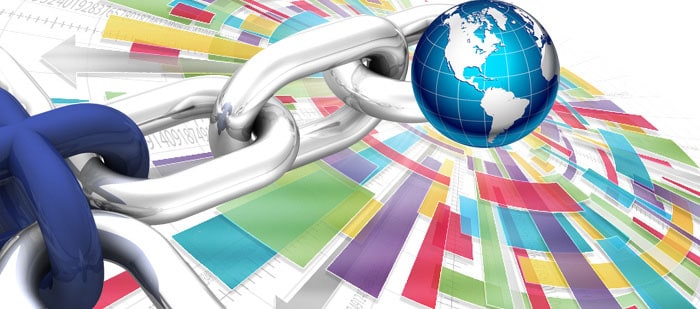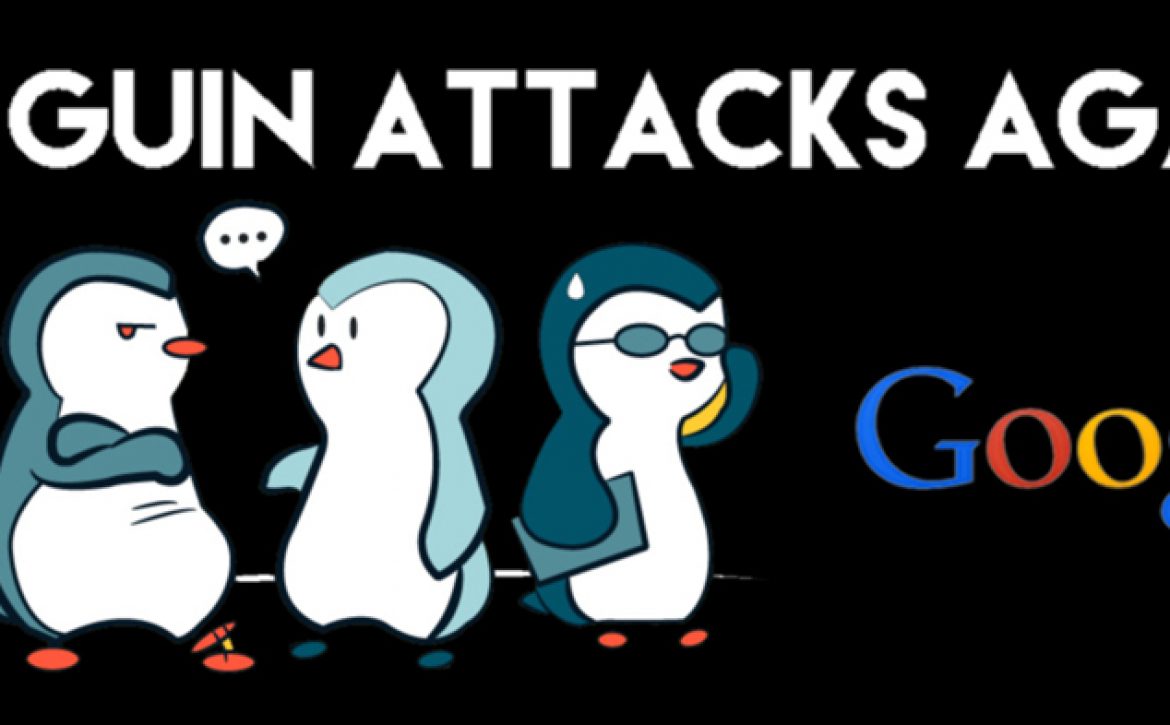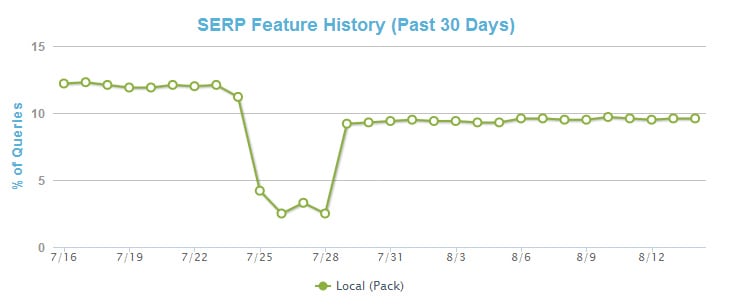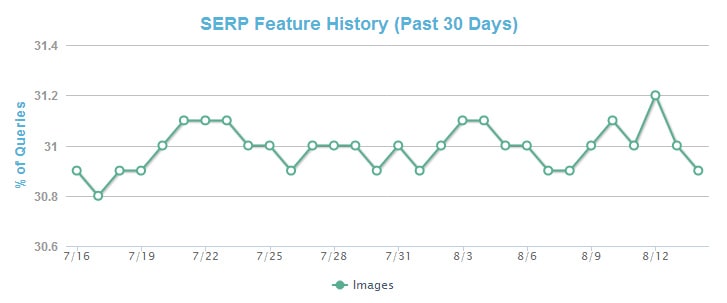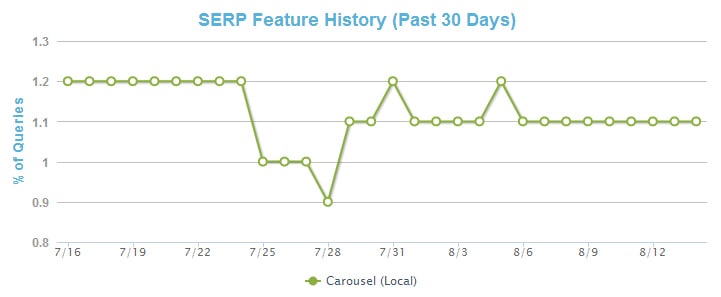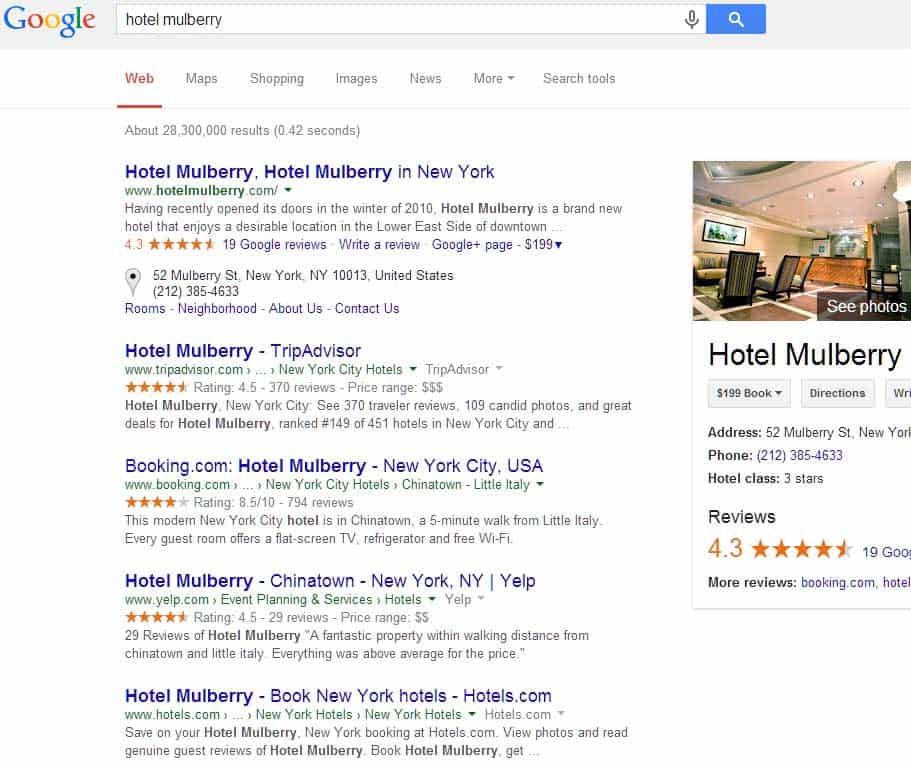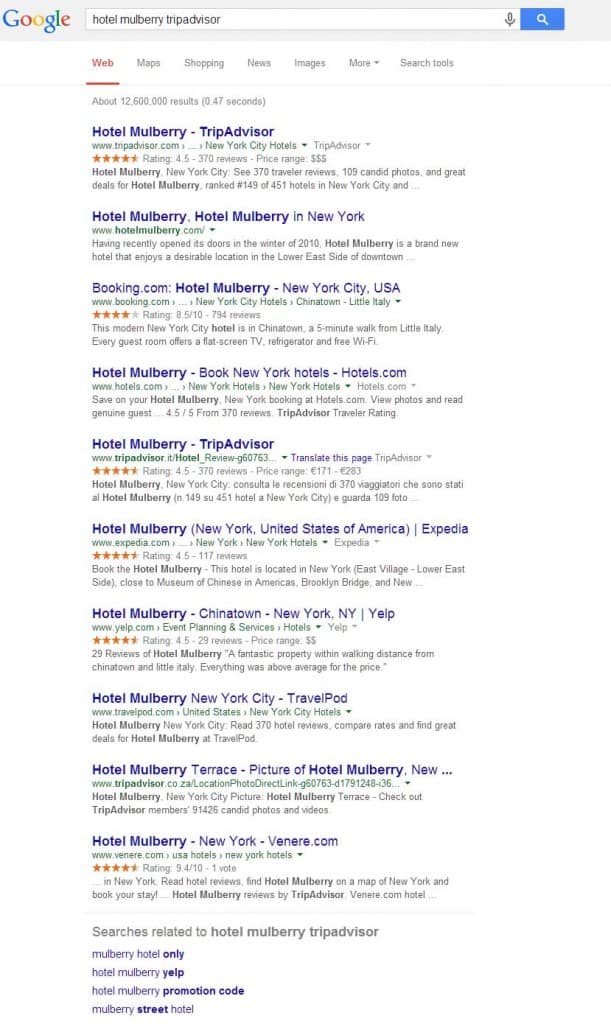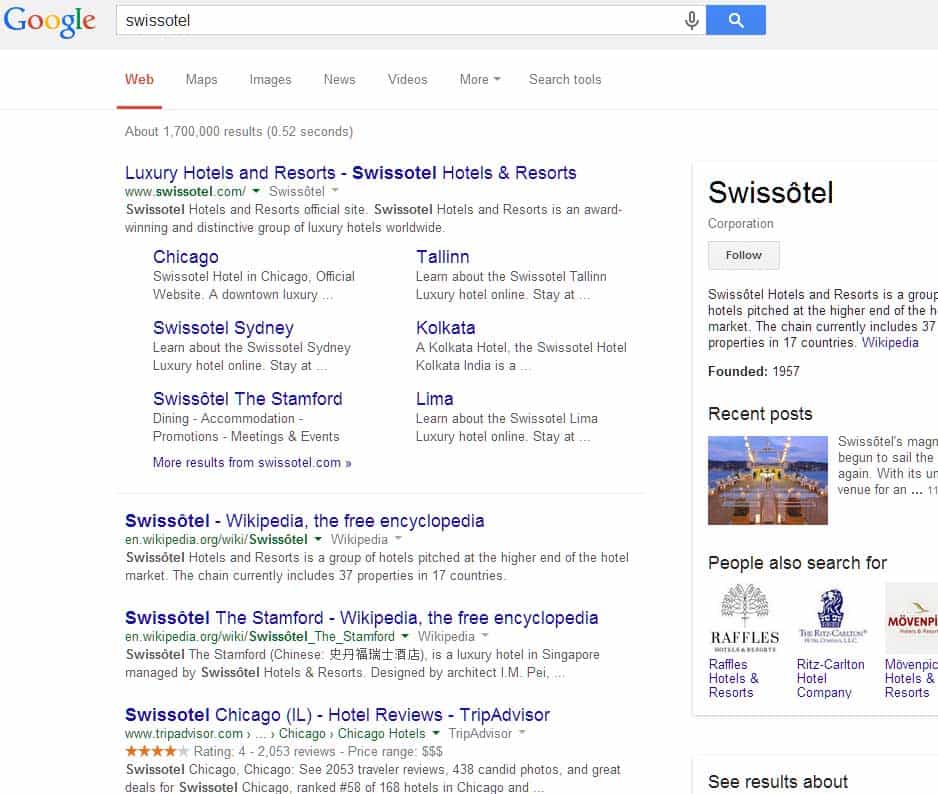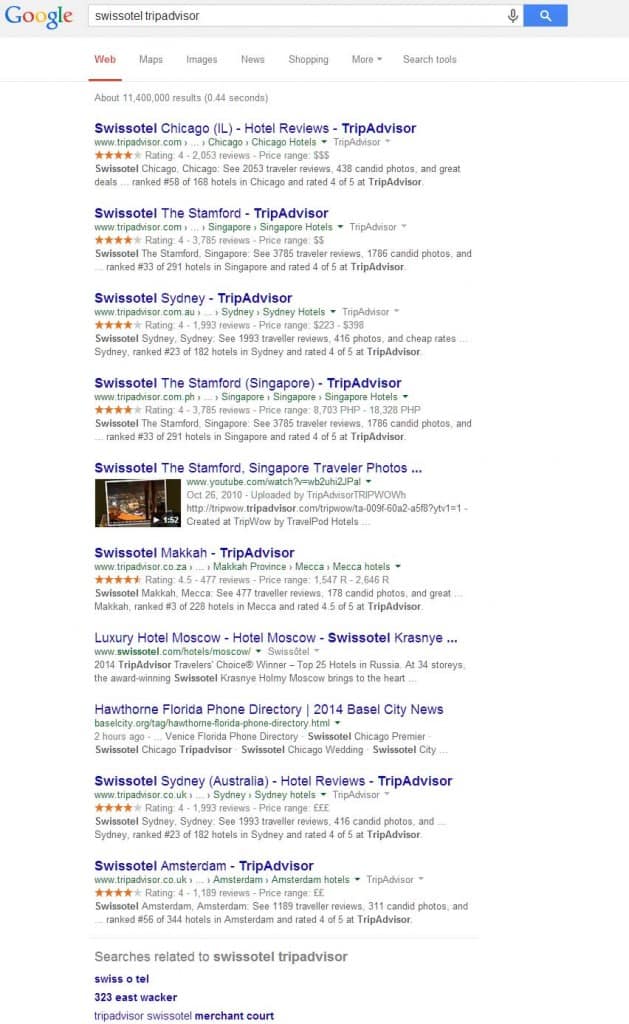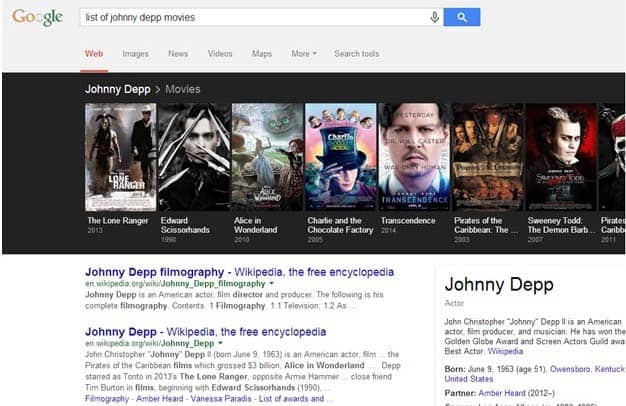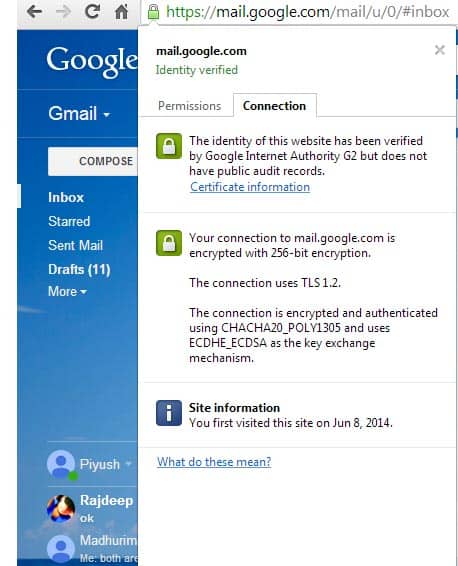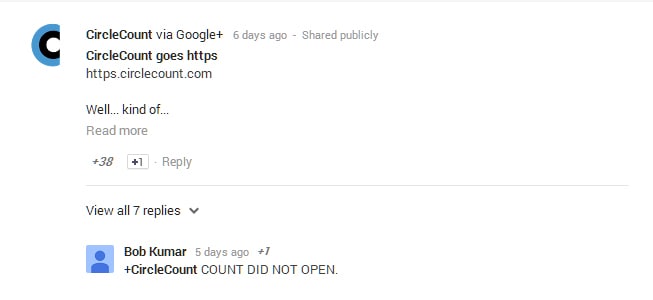8 Point Checklist For SEO in 2015 – Revisiting The 2014 Updates
Most important SEO Checklist – SEO in 2015
So 2014 has been an incredibly powerful year bringing loads of changes in the SEO-verse. First, it was the Panda that reigned terror on websites with thin content, and then came the Authorship Drop followed by the mighty Pigeon that was focused on websites trying to rank locally. Soon after the Pigeon drop, Google unleashed the HTTPS signal which gave a slight boost to websites that had an SSL certificate and as if ranking on the SERPs was not hard enough, finally came the Penguin, which completely smashed illegitimate link building tactics. Don’t worry if you have missed any of these updates in 2014 as I will be giving a brief about them in some time.
Through these years of battling cyber-conspiracies of unethical SEO tactics and fraudulent schemes, Google has been pretty stern in manipulating its algorithms constantly so as to give fair-play an edge over the already overloaded blackhat tactics. The question that was asked in 2012 and also in 2013 and 2014 remains the same – “Is Google bent on killing the SEO?”, “Is SEO dead in 2015?”, “Will SEO agencies die down eventually?”
My answer to all these questions is a “No, NO, NO!”
In 2013 as well as 2014, Google has taken some really tough steps to fight spam, which has completely altered the landscape on which professional SEO’s built their strategies. Time has come to bid adieu to thousands of blackhat SEO agencies and agents who have caused quite a lot of damage already to websites that really deserved to rank. Let’s hope for a brighter 2015 and YES! SEO will never die. The people who manipulate SEO will gradually get eliminated.
As the year’s pass, the need for being online has never been stronger and even though the Internet landscape is gradually shifting and becoming far too competitive than it was yesterday, it is never too late to join the battle.
“BILLIONS OF CONSUMERS. WITH A UNANIMOUS MOTIVE. ON A SINGLE PLATFORM.”
And you give me one reason why your brand doesn’t need to be here?
SEO is not about buying backlinks (the more the better), in fact, it never was. SEO is about a strategist mind that works around the clock to decipher Google’s next moves and respond to them with utmost precision. So as you have already anticipated, the game will go on but the rules are a bit different this time.
Related Articles:
Beware Online Pirates, Google’s New Pirate Update Is Infallible
Google Penguin 3.0 Algorithm – A Massive Blow To Manipulative Tactics
Google Page Rank Is No More! Which Metric Is Next In Google’s Vision?
Google’s Latest HTTPs as Ranking Factor – A Marketing Ploy or Tech Revolution?
Google Pigeon Algorithm – Most Significant Changes To Ranking Signal
A Beginner’s Guide to Google Schema Markup
[/feature_box]
ALL OF 2014 MOVES INTO 2015 – REMEMBER, PRECISION IS THE KEY
Looking at the Google trends of the past few years – The search giant always launches a few tweaks in algorithms every once in a while, but the basic essence always remains the same. And every time around, the tweaks that are made, just make the previous strategies a bit more focused.
Brands that are aware of this constantly changing ball game keep a steady eye on their link profiles and Trust-Flow and Citation Flow and always disavow links that appear to add no legitimate weight to the authority of their website. This should also be your focus in 2015.
So, if you are thinking of making an action plan for your 2015 SEO, you better be well versed with all the changes Google made in 2014. A proper understanding of all the Algos is required so let’s do a quick recap of them in chronological order.
Starting from Earliest to Latest Algorithmic Updates
## Google EMD Update.
Also known as Google Exact Match Domain Update. Though this update was released in 2012 and did not get a buff in 2014, it is still very relevant and is a must-watch for in 2015. This update was focused on preventing low-quality websites which had exact search terms in their domain names and also very poor content. If this update happens, websites that have improved their content and also worked on their architecture will receive a buff in their rankings, and websites that fail to abide by the guidelines will be penalized as usual.
##Page Layout No.3 – February 6, 2014.
Google released their Page Layout update for the third time. This update is also known as the “Top Heavy” Update which focuses on penalizing websites that have too many advertisements above the fold. These websites are normally made as advertisement traps so that visitors end up clicking on one of the advertisements which generate revenue for the websites.
## Panda 4.0 No. 26 – May 19, 2014.
This is one of Google’s most lethal weapons for cutting down low-quality content websites from the SERP’s. Google frequently updates and releases a sibling of this powerful algorithm which has put millions of websites around the Internet out of the Search Engine Result scope.
## Authorship Photo Drop – June 28, 2014.
John Mueller announced on June 25th that Google will be dropping all Authorship photos from the Search Engines which were connected to the Google Plus profiles. Though Google has unlinked the Authorship Markup it is giving a lot of importance to Google+ mentions and links, so consider keeping your Google+ Profile regularly updated.
## Pigeon Algorithm – July 24, 2014.
This algorithm release shook the landscape for all websites which were trying to rank hard for Local search. Google commented that the Pigeon update played a key role in binding the local algorithm with the core algorithm.
## HTTPS/SSL Update – August 6, 2014.
After a long time, Google came out of the closet and said that they would be giving a slight ranking boost to secured websites which had SSL certificates. They also stressed the point that though the boost would be small to start with, they would scale it up to a stronger ranking signal if the changes were positive. Consider getting your website SSL certified in 2015.
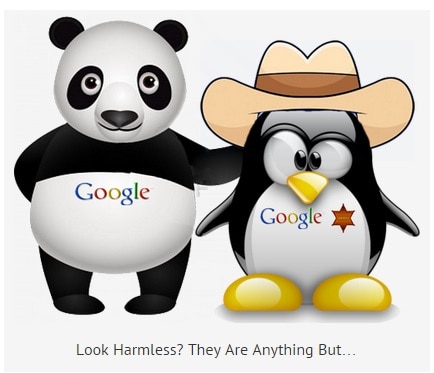
Another slow panda rollout just 4 months after the last rollout. Due to the slow nature of this rollout, the exact start date for the algorithm change is unclear but it did have an impact on 3-5% of the search queries.
## Penguin 3.0 – October 17, 2014.
That previous Penguin 2.1 update was released more than a year back, so Penguin 3.0 was the much-anticipated algorithm refresh from Google in a long time. This update was spread out in weeks and had been a very slow rollout. It aimed at penalizing websites with unethical or manipulative link building tactics.
## Pirate 2.0 – October 21, 2014.
This was another attempt from search giant Google to fight software and digital piracy. It had been more than two years since Google launched the DMCA/Pirate Update and it was a much needed release that caused dramatic ranking drops for a small group of piracy-related websites and torrent projects.
Keeping the Jargon Aside, Let’s Look At Simple Things That You Can Do Now To Make A Difference in 2015
Google is constantly fidgeting with its Algorithms as you can see. Sometimes it rolls out updates of the same Algorithms in an interval of few months. Don’t be fooled by the hype – the more Google updates its search engine software the more holistic the field of SEO is becoming. Even if you inculcate these tiny practices, they are going to make a big difference in your search rankings in 2015.
- Content is Be All and End All.
Did you notice that Google rolled out two versions of the Panda algorithm in 2014? That also in an interval of 4 months. This is a clear signal that Google is laying complete emphasis on filtering spammy and low quality content from high-quality and graduate-level content. Google search algorithms strive hard to differentiate the bad and irrelevant content and deliver only the most appropriate results to the searcher. So double-check the content you put up on your website.
- Social Engagement In The Key.
Do you even need an explanation for this? We know how stringent the rule book is becoming. As Google strives to deliver the most authoritative and relevant information to humans, it is much likely that it will soon start giving even more weight to Social reach and Social Media Interactions like Likes, Shares, Tweets, Pins, etc. If you have not stepped into the Social Media Platforms yet, then by all means make it a point to do so in 2015 – It’s never too late.
- Casual Search Queries
Though we did not see the Humming Bird update in 2014, in 2013 it brought in quite a lot of changes to the way Google interpreted search queries. The most notable change was the way Search Engines started interpreting casual search queries. Search engines started laying more emphasis on the way the queries were entered by not just focusing on the main keywords but the meaning of the whole phrase.
So as a webmaster, you should not focus blindly on generating backlinks. Instead, focus on obtaining backlinks from sources that have high authority and are already trustworthy in the eyes of Google. Also, ensure that the anchor texts that link back to your website are more casual and natural instead of just keyword focused. Double check the content in your website and ensure that the content is meaningful and has a shareable nature.
- Deviating from Traditional Links to Brands References
I don’t want you to think that Inbound Links are worthless in 2015. They are still the most powerful signals that Google will take into consideration to rank a website, but as I have already mentioned before – the tricks of this trade are going to change a lot.
It is a no brainer that the big fishes in the market have enough money to spend on getting “High Quality”, authoritative backlinks to their website, and judging by the way Google released the Penguin 3.0 update in 2014, it is safe to conclude that Google will also start taking into consideration the amount of “Brand Mentions / References” across the web of your brand without any linkbacks. This keeping a balance between Brand Mentions and Inbound Links will be the key to ranking in 2015.
The ideal strategy here would be to make sure all your backlinks appear to be as natural as possible and have a variety of Anchor texts. If you have been building links from a list of Keywords as anchor texts via insignificant websites, Google will recognize the correlation between the same and may penalize your website. So unless you want to wait another year or till the next Penguin update, it would be wise to do a thorough backlink analysis of your website and disavow all the low quality backlinks. By all means, take the help of a professional SEO to do so.
- Responsive Design And User Interaction
According to statistics, 3 out of every 10 people in the world own a smartphone, Phablet, or a Tablet – Give me one reason why you should not care to make your website responsive in 2015 if you have not done it already.
40% of the searches conducted online are done through smartphones and tablets and with the increased presence of such devices in our lives this ratio has been on an upward curve. Focus on making your website structured for proper visibility on devices of different sizes. With increased user interaction of your website, the bounce rate of your website will decrease, which is a good signal for search engine bots that ultimately rank your website.
8 Point SEO Checklist For 2015
As we discussed earlier, 2014 has been a very dramatic year in terms of Algorithmic changes. Google unleashed the Penguin, Panda, and Pigeon Updates along with myriad other small and very significant changes to the ranking signal like HTTPs protocol and Conversational Search Queries. Due to these updates and changes the entire SEO landscape has changed.
I have prepared a checklist of things that you must watch out for along with negative practices which you should avoid at all costs to dodge the Google hammer in 2015 and also be in the Search Engine Trust list.
1# Search Engine Visibility
Alike every single year, this metrics will remain the same only a bit amplified than before. Before you get into the High Quality Content, Social Media Integration, and other such routines, it is important that you make your website discoverable.
What You Should Do?
Have clean website architecture and ensure that all important pages (main categories) are reachable from your Homepage. Also, make sure that you use a logical structure for your websites where your inner pages are carefully tucked under the right categories. Make good use of Breadcrumbs and also Paginate those pages of your website which are too long to scroll.
NOTE: Your Websites URL should reflect your Websites Architecture.
Example of Good Website Architecture:
www.domain.com/main-category1/subcategory/product001
www.domain.com/main-category2/product002
What You Should Not Do?
If the important pages of your website are not visible from the Homepage that is a very bad signal. Not only will this increase the bounce rate of your website, but it will also render the visitors incapable of finding the things they are looking for.
NOTE: Always have a Search Box at the top of your Website.
Don’t unnecessarily cram a lot of subpages into one category, while leaving the others with very thin content. Break your information down into smaller subcategories if needed. Another malpractice that I see a lot of newbies making is that they try to link all the inner pages of their website from the Homepage itself. This is a clear signal of information overload and the visitors will get too confused.
Remember this human tendency – If a man is given too many choices, he opts for no choice at all.
2# XML Sitemaps and RSS Feeds Are Must
To ensure faster and proper indexing, you must befriend XML Sitemaps and RSS Feeds. If you are unaware of what XML Sitemaps or RSS Feeds are, I have defined them below.
XML Sitemaps: These act like the sitemaps of your website, which direct the search engine spiders in the proper direction to ensure that all the pages of your websites are properly indexed.
RSS Feeds: RSS Feeds, also known as Atom Feeds are also a great way of informing search engines about the fresh content at your website. RSS Feeds are most often used by content curators and Journalists or Blog Followers who want to keep track of regular updates on a website.
What You Should Do?
Always ensure that you have submitted your XML sitemap to Google Webmasters Tool and that all the URL’s contained in the Sitemap is canonical in nature.
Only use XML Sitemaps if you have reached the current limit of your Sitemap that is 50000 URLs. Having a single Sitemap is more than enough for small to medium websites. If you use RSS Feeds, then make sure that they only include your website’s fresh content, which will help search engines and users find only the latest updates from your end.
What You Should Not Do?
Don’t let your RSS or Atom Feeds contain all the content from your website. This will make your fresh content difficult to find for those who want to keep track. Also, ensure that your RSS feed does not contain URLs or Links which are not allowed to be indexed by search engines through your website robots.txt. Don’t try to fool search engines by just updating the modification time of your pages. If they are not updated, let them be like that till you have time to update them.
[/icon_box]
3# Make friends with Google Panda
You have already been acquainted with Google’s favorite pet to fight non-authentic, low-quality content. You know what to do.
SEO in 2015 – What You Should Do?
Today Google takes more into consideration than just the fact that the articles you put up on your website are Authentic and pass Copyscape. You must ensure that all the content on your website has graduate-level English and should be as engaging as possible.
NOTE: Make it a point to block all your website’s Legal Documents from being indexed in the Search Engines.
What You Should Not Do?
Don’t scrape and post content from all over the Internet. Don’t be a part of plagiarism campaigns and don’t just pick content from another website, re-write and publish on your website. Try to have unique content with your own opinion that gives a certain value in return for a user’s time spent on your website.
Ensure that pages on your website don’t have exact or similar content. It is fine to give reference to other pages on your website, but meaninglessly adding subpages just to increase the weight of your website is a total no-brainer.
4# Avoid Being Under The Penguin Radar
This is an absolute must. If you do all steps correctly and just avoid this nasty little beast then you are done for – at least one year (until and unless you are pretty lucky). Google’s Penguin Filter aims at blowing those websites out of the Search Engine Results Scope if they are found involved in any manipulative link building tactics. So keeping a natural and clean backlink profile is a must in 2015. If you don’t know what it feels like to suffer the blow of Penguin, consider Googling this phrase – “My website has been penalized by Penguin.” And see the reaction of webmasters who were too lazy to consider doing a backlink profile check.
What You Should Do?
Do a thorough backlink audit of your website and disavow all the spammy and unnaturally acquired backlinks.
NOTE: Sometimes competitor firms do spammy link-building practices on your website just to have it go down the search results in the next algorithmic update. It is vital to do a check of your backlink profile no matter how sure you are that it is clean.
You should always work to acquire good quality editorial backlinks from trusted sources. It is also a good signal to Google if you acquire backlinks at a steady pace. Also, maintain diversity in your anchor texts.
What You Should Not Do?
Never opt for link-building schemes or be a part of reciprocal linking networks. When you do a backlink audit, also disavow all backlinks that appear to be from irrelevant sources. Don’t overdo your anchor texts with brand name or primary keywords.
[/icon_box]
5# Schema Markup Has Gained Relevance In 2014
Schema Markup is a tag that is used by search engines to differentiate entities like (People, Products, Reviews, and Events, etc.) Although Google did not make it clear in any way that it would be giving significance to Schema Markup but in 2014 we saw a lot of websites inculcating the same.
What You Should Do?
Take a look at the available Schemas and pick the ones that best fit your webpage. If you are not that good in coding, you can take of Google Structured Data Markup Tool to Schema Markup your webpages. To test the same you can use the Structured Data Testing Tool that Google has made available to webmasters.
What You Should Not Do?
Don’t ever trick search engines through Schema by tagging your data as something which it is not. If you do this, the search bots will find it and penalize your websites. Stay away from anything that deceives the Search Engine Crawlers and the Visitors.
6# Avoid Buying Social Signals And Earn Them In An Organic Way
Off late you must have noticed that search engines favor websites that have a strong social presence. Even though Google has not confirmed the effect of Social Media on Search Results, but it clearly said that Google treats all Social Media posts that are open to indexing just like it does any other web page or website. So you get the hint.
NOTE: Your Google+ Posts can make it to the Search Results of your G+ Connections and their connections so this can be used to get in a lot of organic traffic.
What You Should Do?
By all means, you should look at attracting social signals by posting meaningful and viral content. Don’t buy social signals from unlawful SEO firms and other agents as they will in most cases do you more harm than good.
Inculcate Social Media Sharing buttons on your website so that it is easy for people to share your posts.
What You Should Not Do?
Don’t waste your time and money by purchasing like and shares or any other type of social signals. Both Search Engines and Social Networks are able to trace accounts that are created for the sole purpose of trading likes and that may result in your social media accounts getting banned altogether.
7# Consider Getting An SSL Certificate
What You Should Do?
HTTPS protocol / SSL Certificates are the small padlock icon before a website name. This small padlock icon is a symbol of trust and security. It is crucial for websites to obtain an SSL certificate if they involve the transfer for Personally Identifiable Information of the users.
However, it is important that you take the help of a professional when transitioning from HTTP to HTTPS – if you do it incorrectly then it may harm your present standing in the search engines.
NOTE: Google made it clear that SSL Certificates give a slight ranking boost to websites, so only consider getting one if your website involves the transfer or sensitive information as SSL Certificates are pretty expensive.
[/icon_box]
8# Improve Website Load Speed and User Experience
Going by the trend of the past few years, Google has started giving weight to quite a few UX-related metrics like Page speed, Responsive Designs, and HTTPs Protocol. Thus, it becomes even more important to keep our focus on enhancing user experience and being at par with Google site speed metrics.
What You Should Do?
Make use of Google Pagespeed Insights to find the current load time of your websites and become aware of any fixes that you could do to decrease the load time of your websites.
Also, if you are optimizing your website for other search engines like Bing, Yahoo! And Yandex – These search engines have made it pretty clear that they give weight to metrics like user engagement and click-through rates in ranking websites. Even though Google continues to keep mum about the same, working on enhancing these features of your website will give you great benefits like increased conversions of your website visitors and more likes, shares, and brand mentions across the internet.
What You Should Not Do?
Don’t have a cluttered website with a very heavy (too many images, media, or advertisements) homepage. Having a minimalistic reach to your website will let it load faster thereby enabling a smooth user experience and faster load time.
FINAL VERDICT – CLOSING CALLS
Even though there are more than 200 ranking signals, most of them are too small to be significant and some of them are such that you have no control over them. If you just focus on doing the things that I have mentioned in this Checklist, you will see a significant rise in rankings in 2015 or even be able to retain your present rankings when there is an upgrade of the current Google algorithms.
Just focus all your effort on completing part of this checklist, one by one and not all at the same time as you will fail. Remember, SEO is an overtime process. It doesn’t happen in one night and nobody, not even the big players reached the search engines in a short time. So just keep your focus on doing the right things like proper website architecture, enhanced user experience, schema markup, graduate-level content, clean backlink profile, etc and you will start to notice that your online presence has become more dominant.



